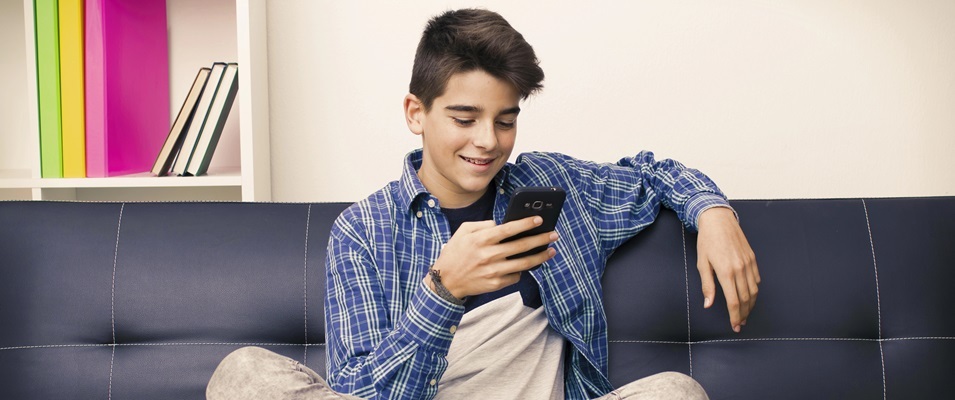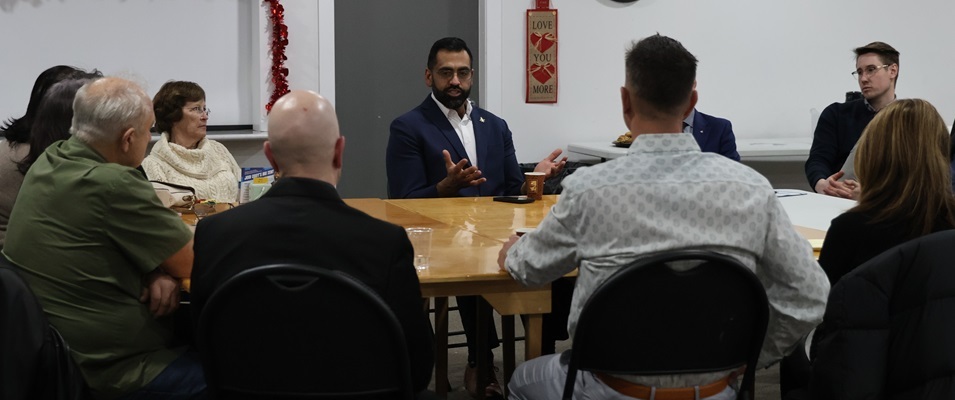
In this article, The Citizen interviews Dr. Jo Ann Unger, a registered clinical psychologist who manages a private practice in Winnipeg. She works professionally with people across the lifespan, from children to families, adults, and couples. Unger also serves as the specialty lead for the child and adolescent division of Clinical Health Psychology through Shared Health. In years past, she’s been the acting manager of the family therapy program at New Directions and the clinical director for Kidthink.
It should come as no surprise to anyone that the years following the COVID-19 pandemic have revealed a lot of difficult things about human nature. Not the least of these insights is the negative role social media now plays in the lives of many young people.
Driven to physical isolation during the first two years of the pandemic, youth naturally turned to social media to maintain relationships and stay connected.
But experts say that this screentime obsession hasn’t tapered off much since the restrictions were lifted.
“Emerging evidence published since the Canadian Paediatric Society’s 2019 position statement on digital media use by school-aged children and adolescents correlates social media use and adverse mental health impacts—effects that have magnified since the onset of the pandemic,” says the Canadian Paediatric Society’s (CPS) website. “Evidence gaps exist on the long-term impacts of social media use and overuse due to novel technologies, but there are enough red flags to warrant action. We are in the midst of a youth mental health crisis that demands meaningful and conscientious mitigation measures.”1
Long before the pandemic, parents and experts alike were already recognizing the detrimental effect of social media on children in terms of broad content exposure and online behaviours such as sexting and cyberbullying.
According to the CPS, though, screentime remains a defining factor in the research of healthy media use among kids.
Based on a study of students across Ontario and Alberta, the CPS says that the average high school student spends more than 7.5 hours per day on various screens. For a good many of them, much of that time is spent on social media platforms such as Facebook, Instagram, TikTok, and Snapchat.
However, it’s not just older teens who are overly engaged in screentime.
“Three-quarters of Canadian parents are concerned about how much time children spend using media, reporting that 36 percent of their 10- to 13-year-olds spent 3 hours or more per day using digital devices for reasons unrelated to school work,” says CPS.2
Emma Duerden, the Canada Research Chair in neuroscience and learning disorders at Western University, says that some of the statistics paint an even more dire picture.
According to Duerden’s research, screentime today is down only slightly from what some parents were reporting as the norm during the early months of the pandemic. At that time, reports indicated that 13 hours a day on screens for six- to 12-year-olds was common.
Using brain imaging to study the impacts of social media on children’s brains, Duerden has found that obsessive use is increasing the levels of childhood depression, anxiety, and aggression.
“Absolutely, I think this is a public health issue,” Duerden told the CBC.3
In response, the U.S. surgeon general, Dr. Vivek Murthy, put out a call in May recommending that social media platforms include health warnings on their sites and apps similar to those found on cigarette packs.
Murthy has been said to criticize tech companies for unleashing powerful technology without providing adequate safety measures or accountability.
Shortly after, Canada’s Minister of Health, Mark Holland, also went public on this subject—although he didn’t agree with Murthy’s conclusion. Warning labels wouldn’t be helpful, he said. Instead parents should be having these conversations with their kids.
What Locals Think
One parent, Jennie Rempel, agrees with Holland. She has three children between the ages of 11 and 16.
“Warning labels will do nothing,” Rempel says. “It’s up to parents to set limits.”
It’s no easy task for any parent to manage, she admits, but it begins with open conversations with your kids.
“As parents we have to be on top of it,” she says. “Blocking them, monitoring, checking their phones and laptops.”
As well, Rempel believes that parents should be researching safer alternatives, such as Messenger Kids, which doesn’t require a Facebook profile and can be monitored by parents.
Putting a shutoff timer on the Wi-Fi router, she adds, is a good way to manage screen use for the entire family.
Another parents, Ricki Harms, agrees that there’s little benefit to a warning label on a social media site.
“I’m very thankful I grew up without social media,” says Harms. “It’s terrible for kids. Added peer pressure, more opportunities for bullying… and ridiculous beauty standards for girls to try and achieve. But a warning label wouldn’t really fix any of that. If you are on it, it will affect you.”
Elizabeth Legault says that warning labels on social media may actually have the opposite effect of what they intend.
“Warning labels just make kids want something more,” says Legault. “[Teaching] abstinence instead of sex education is a really good example of this. Lack of education causes kids to not understand what they need to do to prevent certain things and also to hide those things from their folks.”
From Jazmin Dobson’s viewpoint, kids have no business being on social media at all. But since they are, warning labels may pose some benefit.
“The warning labels on my cigarette packs don’t stop me from smoking,” Dobson says. “But at least I am fully informed about the choice that I’m making. Warning labels are a way to inform the general public of the dangers of something. Even adults should be aware and informed of the dangers of social media.”
Insights from a Child Psychologist
Dr. Jo Ann Unger is a Winnipeg-based child and family psychologist. She and a colleague have set out to write a book on the subject of the effects of social media and screentime on children.
Almost more importantly, she says, the book will provide useful tools to help parents manage the healthy use of screens and apps.
Unger says that research on the subject is certainly imperative in helping set standards that can protect kids. Parents need to understand, though, that the research is based on averages. Recognizing that, they should know that it is possible for them to develop healthy family practices which in turn create healthier kids.
It’s all about context. How well are children being supported, how full is their life with other distractions, and what challenges are they facing that might make them more vulnerable?
“When we’re looking at these different types of research studies, what we’re often seeing is the averages,” Unger says. “In that regard, having a warning that’s up to date is useful [on average]. There is reason to believe that we are not doing a good job of making the internet or social media platforms set up in such a way that it supports adolescent mental health.”
While she doesn’t deny that social media screentime can have adverse affects on adults, too, without question youth and children are exponentially more vulnerable. This is due to their immaturity in terms of brain development, identity development, and social and emotional development.
“All [adolescents] have these elements of really being sensitive to rejection, really being sensitive to the approval of others, and figuring out where they belong in terms of their friend groups,” says Unger. “They’re differentiating from their parents, appropriately so, and they’re looking to their peers more than they ever have before for information, for validation, and for support.”
As well, she adds, the fear of missing out is much stronger in adolescents than in adults.
“For adolescents it’s like, ‘If I’m not online, I’m going to miss something that’s very important socially and that will have a negative impact on my relationships or my sense of belonging,’” Unger says.
We are by nature, after all, flock creatures. Social connection is where we derive a sense of security and love. So a sense of separation or not belonging can activate a survival instinct, making isolation feel bigger than it actually is.
Unfortunately, Unger adds, social media is only pseudo-social in nature. It gives the appearance of engagement but leaves out a key element that only person-to-person contact can achieve: nonverbal communication. Facial and body cues tell us so much.
“It gives you a social hit but not enough of the real stuff to keep you [mentally] healthy,” Unger says. “To me it’s just a nice supplement to a real relationship, but it can’t replace it.”
Another problem with extended screentime, she adds, is that it provides constant distraction from real life. While it’s an effective boredom prevention tool, she reminds parents that boredom breeds creativity, making it an essential part of life in terms of personal growth.
But what is it that makes social media an obsession in the first place?
According to Unger, it provides an instantaneous fix and it’s with you all the time. The reinforcement patterns which are built right into social media platforms—the use of symbols indicating “likes” and “loves”—are mechanisms for approval, something we all crave.
“That, I think, is what we need to be addressing,” Unger says. “How these social media algorithms and reinforcement patterns are set up to actually keep people engaged. That’s where the changes and regulations need to come in. Right now, they’re set up to benefit the app and their advertisers. They’re there to make money, but the cost is coming at our children’s mental health.”
The use of algorithms, Unger says, also adds to the addictive quality of social media. Designed to keep users engaged and scrolling longer, they can have a polarizing effect.
“It’s tailored to you,” Unger says. “What you’ve clicked on before, it will give you more of that. And that’s actually influencing the polarization of our world right now. Because it pulls you more and more in one direction, away from the average, toward one end of a pole.”
It’s this external curation of our interests that prevents us from finding the balance that comes from perspective. One has to be very intentional in their search for a wider spectrum of information to find balance.
Children rarely do that.
Responsibility
But where does the responsibility lie—big tech, the regulators, or parents? In Unger’s mind, the onus falls on all three.
“Even we as adults struggle with self-regulation,” she says. “But teenagers’ brains don’t finish developing till they’re 25, so to expect them to self-regulate something that is very reinforcing and is designed to be so, is not realistic.”
That doesn’t mean they can’t be coached, she adds, but it would serve parents well to enforce screentime rules. These might include switching off the Wi-Fi or turning in cellphones at a certain time of day.
Without question, the best way to reinforce any family policy is to model it.
“There’s research to show that high use [of screens] in parents equals high use in kids,” Unger says. “And high use with parents affects the parent-child relationship as well.”
Another question many parents struggle with an answer to is when their child is ready to own their own cellphone device. In Unger’s opinion, this shouldn’t happen before they turn 12.
“For some parents, if the child is independently transporting themselves, like walking to school, they might want to have a cellphone for safety and that sort of thing,” says Unger. “But I would challenge parents to think about why their child would need their own device. So if there is a need that it meets, that’s what I would use as my parameter as opposed to, ‘Well, their friends have one.’”
It’s a tricky dance, though, when parents don’t want to be the reason their child becomes socially ostracized. One strategy to address that, she says, would be to collaborate with the parents of your child’s friend group in order come to a mutual agreeable age in which the majority feels their kids will get cellphones.
The prohibitive cost of giving every member of the family their own cellphone also needs to be considered for many families.
Signs to Watch For
Unger says there are a few signs parents can watch for when it comes to determining if their children are struggling due to social media overuse.
Parents should pay attention to how engaged their child is when trying to converse with them face to face. Are their marks at school suffering? Do they tend to isolate in their rooms or become quiet in public? Do they get anxious when you suggest they put the phone away in order to do an activity with you?
Finally, how much time are they spending in person-to-person connections with friends and how much physical activity are they engaged in on a regular basis?



















